Essential Devices for Adapting the Home After Stroke
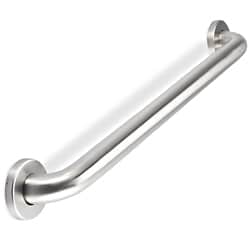
Strokes affect everybody differently, leaving victims to live with a variety of challenging physical and cognitive conditions. Many factors need to be considered when managing stroke recovery: damaged parts of the brain, severity of injuries, numbness or weakness of the body, loss of motor skills, extreme fatigue.
The problems seem overwhelming, but victims can move forward. With love, support, and hope, a stroke survivor has the potential to successfully regain independence. By implementing safety precautions at home, changes in lifestyle, and utilizing adaptive equipment, a victim can improve their rehabilitation and maintain self-sufficiency.
Living at Home After a Stroke
For someone who has suffered a minor stroke, returning home and recovering is simpler than it is for those affected by more severe stroke consequences. If you or a loved one faces significant injuries, achieving independence at home relies on several factors.
Taking Care of Yourself
Perhaps the most important factor of all, rehabilitation at home entails carrying out daily fundamental tasks. This includes feeding yourself, toileting, changing clothes regularly, strengthening movement and communication skills, and maintaining good hygiene.
Taking Medications on Time
Along with performing basic tasks, it’s important to follow medical advice and prescriptions. Making sure to take medications as prescribed and perform other medical regiments, will greatly decrease the chances of having another stroke, as well as reduce issues after suffering from one.
Having a Caregiver
Giving you full-time attention and support, a caregiver is a tremendous way to rebuild confidence and reclaim independence. A caregiver can assist with maintaining daily routines, taking medications, and being a source of moral support throughout the recovery period.
Home Adaptability
Safety always comes first, and if recovery is taking place in the home, then certain precautions must be taken to ensure proper rehabilitation. The first step is to take away anything that could be a potential hazard, such as loose carpets, electrical cords, or clutter. Open space is best for patients as they set up to move around the home. Clearing out unnecessary objects will allow open pathways to and from different parts of the house. If mobility is a greater concern, handrails and transfer benches can be installed to promote a greater and safer self-reliance.
It’s important to contact a healthcare team to determine whether moving home is the right fit for a survivor after a stroke. It is always a good idea to discuss the options of recovery and determining which kinds of adaptive equipment and home modifications will help most. Below is a general guide to assistive devices that will be helpful to the average stroke survivor.
Best Assistive Devices
Best Bathroom Assistive Devices
Grab Rails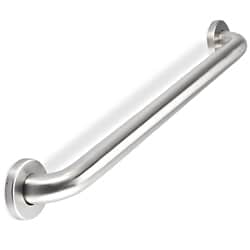
Install rails to provide support when transferring in and out of the bath or shower. The type needed will depend on the patient's limitations and safety concerns.To make your selection easier, here is a comprehensive guide to review: https://livingmadeeasy.org.uk/dlf-factsheets/adapting-your-home-the-bathroom
Slip-Resistant Mats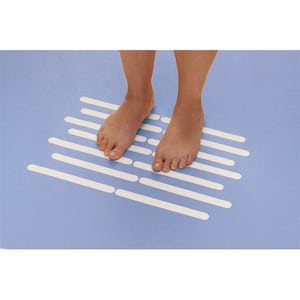
Slip-resistant mats are mats that are fitted to the bottom of a shower or tub and have self-adhesive capabilities to lower the chances of slipping. They are perfect for someone with decreased balance, difficulty with standing or sitting and limited safety awareness. Make sure to refrain from using any kind of oils and other liquids that could prevent the mat from sticking.
Bath Transfer Bench
These extend over the side of the bathtub making it easier and safer to get in and out. This device does not require someone to step into the tub, preventing a potential concern of falling.
Shower Chair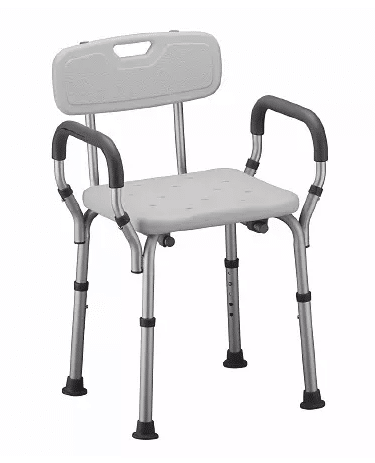
A shower chair is made to offer rest and support if one cannot stand for long periods of time.
Long-Handled Scrubbers
A loofa or sponge equipped with a long handle makes it easier to wash hard-to-reach areas of the body.
Toilet Tissue Holders
This is a tool with a long handle that holds toilet paper at the end. This allows for someone with limited mobility to maintain their personal hygiene.
Best Bedroom Assistive Devices
Sock Aids
Sock aids allow you to put on socks easily if you have limited motor function or difficulty bending over.
Button and Zipper Aides
This is a tool with a long or short handle that allows for easy use of zippers and buttons on jackets and shirts.
Long-Handled Shoe Horn
Easily slip on a pair of shoes from a sitting or standing position with a long-handled shoe horn. It requires minimum grip strength to operate, and the tool is made for all different types of footwear.
Bra Aid
A bra aid allows for easy placement and fastening of a bra with the use of one arm.
Velcro Fastenings
Rather than mess with buttons, customize your clothing with strips or pads of Velcro. Velcro is perfect for attaching fabric to non-fabric surfaces, and makes getting dressed a breeze. It is particularly helpful for those with decreased fine motor coordination or painful joints associated with arthritis.
Best Kitchen Assistive Devices
Finger Loop Utensils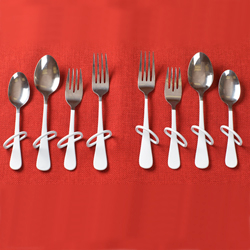
Perfect for someone with no grip strength, finger loop utensils rest comfortably in a natural hand position allowing one to maneuver and manipulate properly.
Rocking T Knife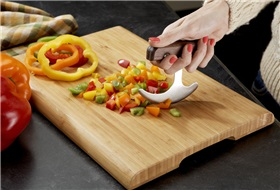
The rocking t knife cuts food by putting pressure onto the handle, creating a slight rocking motion. The blade is fully functional and able to be sharpened.
Swedish One-Handed Cutting Board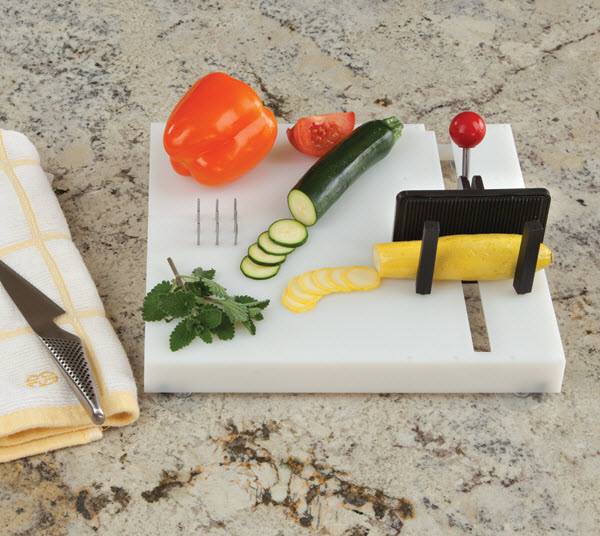
If cutting meats and produce is a concern, this tool comes with a vise to hold items in place, allowing you to cut with the other hand.
Freedom No-Slip Scoop Plate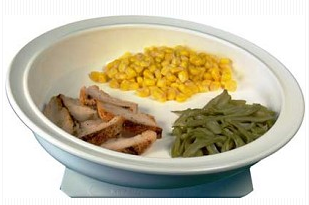
The Freedom No-Slip Scoop Plate has rounded edges to make using a utensil less strenuous. There is also a removable vacuum pad that suctions to the the surface so that the plate holds its position.
Verti-Grip Professional Knife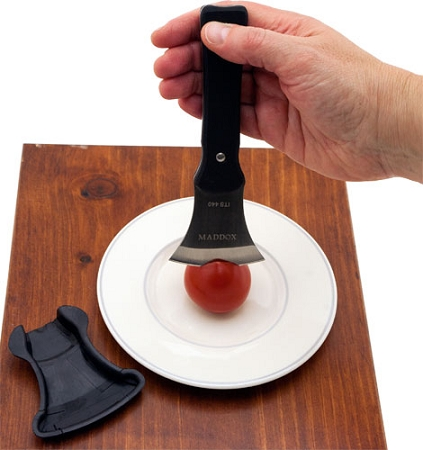
The Verti-Grip Professional Knife is a one-handed vertical knife that uses light downward force to slice a variety of foods.
Best Devices for Mobility
Rolling Walker
To help with balance, or to combat weakness of the arms and legs, a rolling walker may be a perfect solution. Using moderate force in the arms, a person is able to move forward with either a 2-wheel walker, or a 4-wheel walker equipped with a seat.
Cane or Quad Cane
Used to steady the body while in motion, a traditional cane or quad cane (4-legged unit) is best suited for those requiring the least amount of support.
Wheelchair
In most cases, someone who has suffered from a stroke will require the use of a wheelchair during their recovery. Wheelchairs come in a variety of styles with special features, like easy adjustability and handheld motion control. It is always best to consult with a healthcare professional to choose which type will meet your specific needs.
Tools to Adapt
After suffering from a stroke, the road to recovery is a difficult one. Not only does the body face tremendous difficulties, but major lifestyle changes place a great deal of strain on a survivor’s spirit.
Adjusting to a new life is hard for anyone, but by using helpful tools that make recovery easier, a fresh outlook and perspective is possible. If you or a loved one is a survivor of a stroke, trust that there is a pathway to rehabilitation, and each small step forward moves closer to a better day.
All content provided on this blog is for informational purposes only and is not intended to be a substitute for professional medical advice, diagnosis, or treatment. Always seek the advice of your physician or other qualified health provider with any questions you may have regarding a medical condition. If you think you may have a medical emergency, call your doctor or 911 immediately. Reliance on any information provided by the Saebo website is solely at your own risk.
All content provided on this blog is for informational purposes only and is not intended to be a substitute for professional medical advice, diagnosis, or treatment. Always seek the advice of your physician or other qualified health providers with any questions you may have regarding a medical condition. If you think you may have a medical emergency, call your doctor or 911 immediately. Reliance on any information provided by the Saebo website is solely at your own risk.



